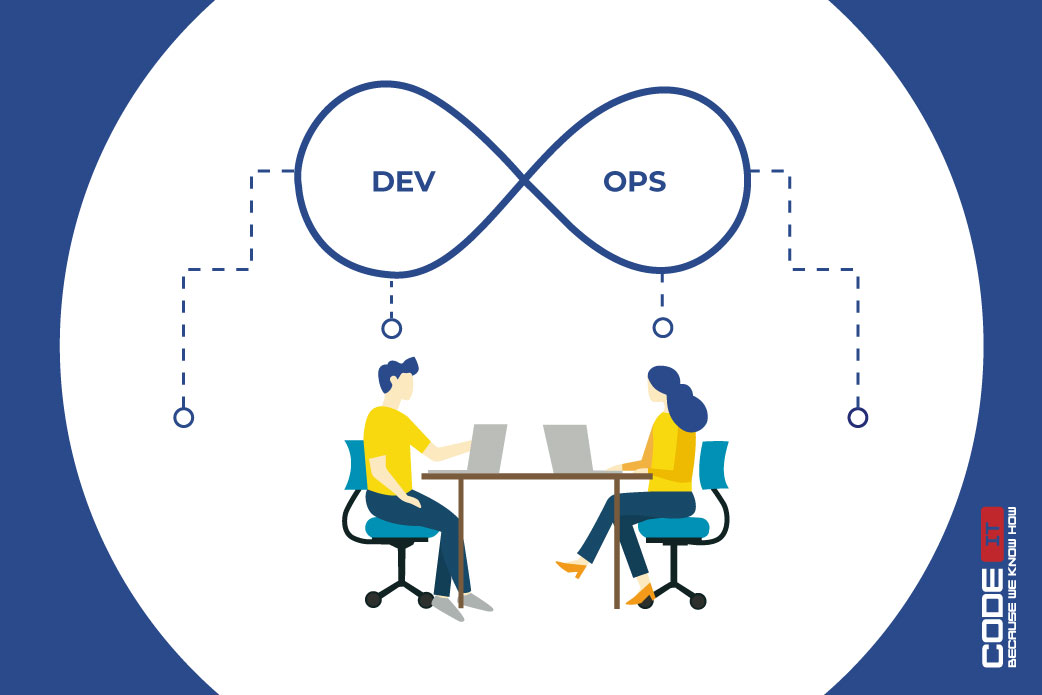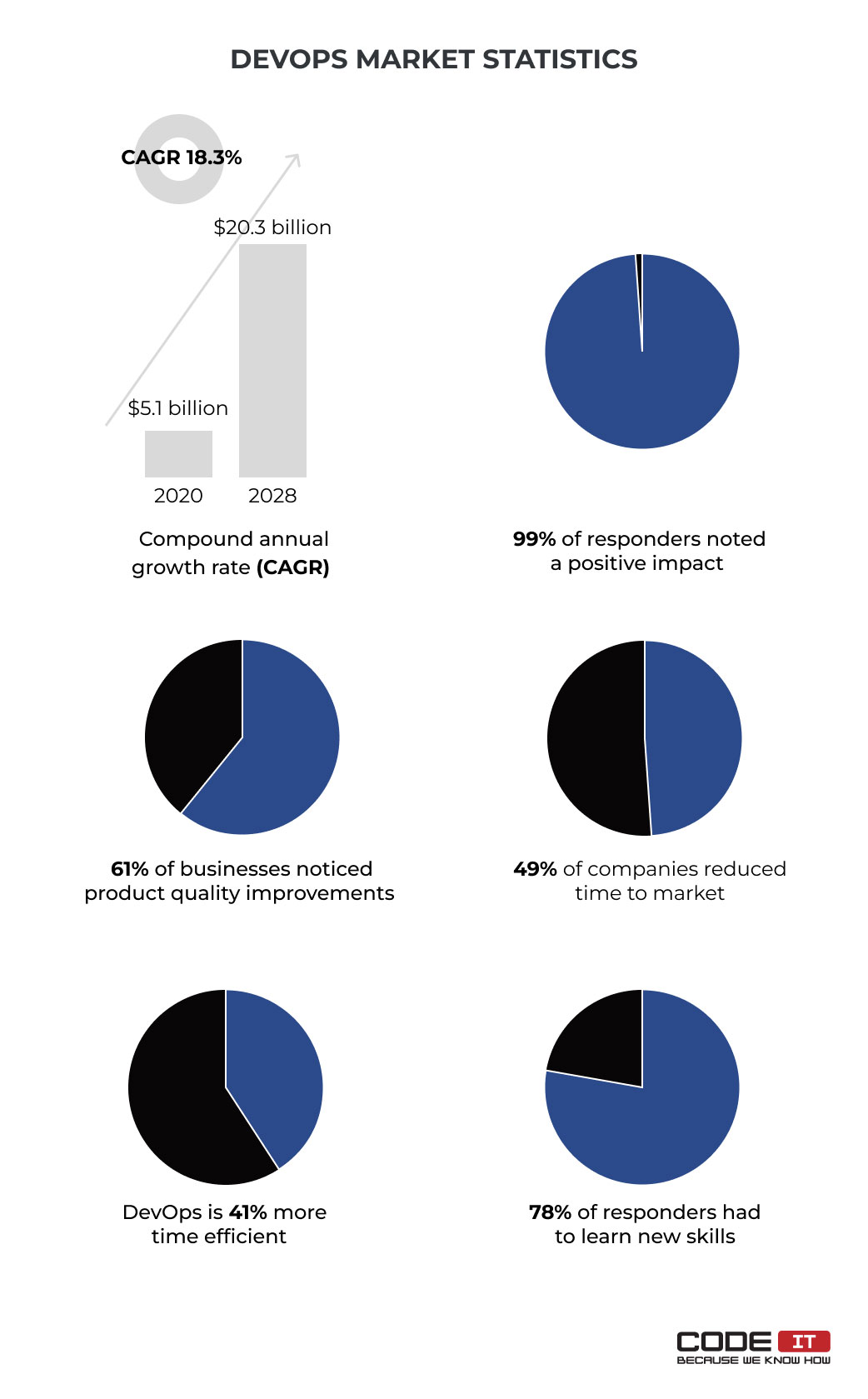It's difficult to think that a cutting-edge organization doesn't have top-notch DevOps implementation services and software support. When it comes to the software development industry, nothing can be achieved if there aren't DevOps operations implemented into the organization's current software. Each business is adopting and implementing DevOps operations because the software is at the heart of every organization.
Systems and software development becomes an economic engine and a strategic asset. All the giants in the field of technology, like Amazon, Netflix, and Google, prioritize that.
However, not everyone can understand the concept and build a successful DevOps application. This understanding is what we are going to impart in this article so that you have a clear idea regarding the DevOps phenomenon.
What exactly is DevOps?

The combination of operations and software development is referred to as DevOps, and it helps in delivering services and applications that leads to enhanced user experience. DevOps helps create real-time collaboration with ongoing and frequent communication that impacts the workflow of IT development and operational teams. The approach in DevOps is to organize the workflow in a manner that allows multiple teams to work with discipline through the implementation of Agile practices and planning like:
- Infrastructure automation
- Continuous delivery
- Continuous integration
The technology community uses various terms to describe DevOps, as it helps to create a set of practices, a philosophy, a movement, and a culture that acts using these tools. It also helps to improve and automate imperfect methods involved in the management of difficult systems.
Irrespective of how you look at it, DevOps is required because software development is a strategic asset in the global economy for businesses and organizations of all sizes. The DevOps culture borrows from Lean and Agile principles, and there is more focus placed on quality and service. That is the reason why DevOps practitioners are always managing, deploying, testing, building, operating, and designing systems and applications to be more reliable and faster. In this manner, they manage to create greater value for customers and foster a manageable workflow that will place products over people.
To recap, the process of implementing DevOps methodology is the creation of such conditions in the system of work processes within your company, which will combine all the best qualities of Agile & Lean methodologies. This is done in order to ensure continuous delivery of services, continuous integration, support constant communication between teams, and automate testing and deployment and change implementation processes.
DEVOPS IMPLEMENTATION STATISTICS
According to the Global DevOps report, the market is expected to grow from $5.1 billion in 2020 to $20.3 billion in 2028, with an 18.3% of compound annual growth rate (CAGR). The fast-paced market growth is backed by the solid benefits of implementing DevOps practices.

Let's check the statistics to learn more about the market and real-world DevOps benefits.
- 99% of responders reported a positive impact of DevOps implementation on their businesses
- 61% of business owners noticed significant product quality improvements after implementing continuous integration and continuous delivery (CI/CD)
- 49% of companies reported that DevOps practices help achieve reduced time-to-market
- DevOps is 41% more time efficient compared to traditional operations
- 78% of respondents had to learn new skills to implement DevOps practices
The DevOps Journey
The DevOps journey starts by exploring the current delivery cycles and procedures that clearly identify the objectives you want in your DevOps implementation plan. You will need to understand these if you want to tackle brownfield or greenfield deployment.
Brownfield deployments
It refers to new software development using existing systems and solutions. These are harder to implement because they require parallel deployment methods but result in less downtime. It is like trying to fix a car that is already running on the road.
Greenfield deployments
They are built from scratch and are easier to implement but can be prone to downtime since the services are delivered through cutting-edge DevOps deployment methodology.
Regardless of your choice, it is important to run a pilot project first. If the objective is to gain faster marketing time, you can focus on moving your product to stricter deadlines. This will allow you to choose an iterative DevOps model that checks out the impact.
Developing a DevOps Implementation Plan
DevOps requires upfront planning to deliver performance. Businesses that implement DevOps without experimenting with it or testing it tends to fail. The transition to DevOps is focused not only on processes and tools but also on people. The main problem here is in building collaborative power across departments, teams, and throughout the organization.

1. Align Various Goals for DevOps in Your Business
The first one from our list of DevOps application steps. When you transition to DevOps, you must focus on self-absorption and carry that into cooperative communication. Otherwise, the transition will be incomplete. The whole team is working towards a similar goal, and because DevOps has a transformative culture, it encourages you to have individual preferences that come with collaborative choices.
There must be honest and candid interactions with participants, as this approach will bring success to the project. Bringing automation can aid continuity in distant locations and communication. Tight collaboration brings a more empathetic culture that will empower operations to accomplish coordination that brings results.
2. Prepare for a Cultural Shift
DevOps brings together tools, processes, and people all in one place, which helps convert an organization into one entity. The cultural shift brought on by this combination will be the backbone of DevOps. It may change the culture of your company by converting it into one of the most difficult challenges you can ever face. You can do that by introducing new procedures and policies. While you will find success in the beginning, failing to change your organizational culture means failure in the DevOps implementation proposal in general.
Successful DevOps is a companywide movement that starts with the top-level management and goes all the way down to the staff. You must ensure that all operations personnel and developers understand the value that comes with the organization before you can bring them all in one place. One of the best ways to do that is by rewarding DevOps teams for delivering outstanding customer service.
Most businesses ask developers to work on-call so that they understand the various operational challenges. However, most choose to expedite the cultural shift through rock-star operations staff and developers, who can encourage other team members.
3. Create a Continuous Delivery and Integration Platform
Perhaps the most important factor in our DevOps strategy example. Once everyone is on board, you should shift your attention to the production environment for DevOps, so you can plan an appropriate deployment. This ensures that developers can focus on coordinated 'build-and-run' approaches. In this approach, each developer that builds a service or product 'owns' a service or product that runs through to production. That 'ownership' will extend for periods because major bugs are addressed before handing off or for the lifetime of the service or product.
Both approaches work, but the main thing is in operations since that is where most issues are resolved. The DevOps team will include all the keys of the service lifecycle, and from there, it will go to maintenance, deployment, and planning. There is a huge team with in-depth knowledge of the infrastructure and platform that will debug problems and troubleshoot. The key here is to create automated deployment pipelines where the deployment of a fully automated script for an environment happens in minutes.
The deployment pipeline must focus on continuous deployment, testing, development, and integration into one entity to ensure success. This is probably the main challenge in DevOps application. You can do that by:
- Changing a code that is committed to the source control system triggers a process.
- The process compiles the code and brings together the artifacts that are necessary for deployment into deployable packages.
- Automated tests are performed on packages to ensure code quality that performs as expected and is retained.
- If the commitment stage is successful, the application will be deployed in a test environment. Here it can be inspected with the help of the quality assurance team.
- After the application has been approved, the same release can be pushed into production.
4. Use Constant Communication
The operations side of a DevOps team will conduct the application performance monitoring. It can sometimes disregard feedback which impacts the collaboration aspect of DevOps. Usually, operations are tested after coding without the need for any feedback. However, DevOps methodologies need monitored operations to be integrated and coded as an integral process in the deployment pipeline. The smoothness of the deployment is based on smooth communication.
5. Accelerate the Deployment Pipeline
The DevOps team will affect the release management, which is the final stage of production. A comprehensive understanding of every aspect of the deployment pipeline is necessary here, meaning the reflection, production, and discussion cycles become intuitive. If you don't get a result, it signifies a breakdown in cooperative communication at all points in the deployment pipeline.
6. Give Priority to DevOps Culture Over DevOps Tools
The final point of our DevOps implementation roadmap. DevOps processes and procedures require support instead of leadership, and the entire process is indicative of the fact that the culture is cooperative. Communications fuel the journey that will take a project to completion. Any organization that focuses on related automation tools and metrics over the course of communication will fall short when adopting reliable DevOps methods.
Effective collaboration will expand the expertise of a project team member that prevents experts from creating bottlenecks. It will also impact employment with unified brainpower to decisively and smoothly arrive at solutions and cooperate with team members. It will achieve these goals while preventing instances of extreme concern in the organization.

Benefits of DevOps implementation
DevOps offers fundamental and cultural changes to any organization and brings a lot of benefits. You must choose this practice carefully to ensure that it delivers the maximum benefit to your business.

The correct DevOps plan will let businesses perform their tasks quickly and take advantage of these benefits:
- Scalable infrastructure for managing complex systems without any risk
- Rapid response to altering needs of customers
- Quicker bug fixing
- Increased team collaboration
- Enhanced quality
- Decreased production costs
- Compliance within the IT landscape
- Better marketing time
In Conclusion
Transitioning from standard software development cycles to DevOps is difficult and involves a comprehensive change in the entire business. The main thing is selecting the right people for the processes and providing them with the best tools. Follow all the best DevOps practices and manage to create a proper delivery pipeline that follows an outstanding DevOps application strategy.
DevOps implementation is carried out in several steps:
- Staff training
- Implementation of continuous integration and continuous delivery (CI/CD)
- Creation of conditions for continuous testing
- Continuous support and monitoring
The main goal of DevOps implementation is to unite the best specialists and the best methodologies in one direction in order to provide the client with a constant value delivery flow.
Implementation of DevOps allows a business to achieve more efficient delivery of products and services in a shorter time frame and more consistent with the client's business logic. The main benefits of DevOps are:
- Fast delivery
- Increased transparency
- Improved team collaboration
- Rapid recovery
- Reduced costs
- Reduced overall risks
- Enhanced customer satisfaction
- Improved quality





